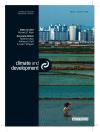Recommended Literature
Climate and Development: A new journal for an emerging field
Over the past decades climate change has increasingly been framed as a development issue as well as an environmental concern. Climate and Development is the first academic journal dedicated to the range of issues that arise when climate variability, climate change and climate policy are considered along with development needs, impacts and priorities. It aims to make complex analysis of climate and development issues accessible to a wide audience of researchers, policymakers and practitioners, and to facilitate debate between the diverse constituencies active in these fields throughout the world.
The idea for Climate and Development originated from the IPCC Fourth Assessment Report, which was published in 2007. The report contains several chapters that assess climate change in the context of development, including a chapter on coastal systems and low-lying areas. When preparing text on the links between climate and development, the authors were struck by two issues: (i) there is no single journal in which relevant papers are published, and (ii) most of the relevant papers were written by experts from the developed world.
Climate and Development aims to address both of these issues. First, its Aims and Scope bring together research interests that were previously dispersed over a range of different journals focusing on either climate change or development. The members of the journal’s editorial board have been carefully selected to represent the full spectrum of conceptual, policy-analytical and empirical studies of the interactions between climate impacts, mitigation, adaptation and development, on scales from local to global.
Second, the journal actively encourages submissions from developing-country experts. It seeks to present empirical evidence both grounded in theory and 'straight from the field'. For example, it has introduced a manuscript category 'case studies', which allows for the publication of project findings that do not necessarily have to be grounded in a theoretical research framework. These project results might otherwise only be published in internal project documents, and therefore remain publicly invisible, including to IPCC authors. In addition, the journal has initiated a capacity-building activity known as 'writeshops', which provide training and mentoring to developing-country experts with limited experience in academic publishing.
The first issue of Climate and Development came out in March 2009. It was well received, and was followed by a large number of new submissions, securing sufficient material to sustain the publication of at least four issues a year.
The publication of Climate and Development is supported by the Swedish International Development Cooperation Agency (Sida) and the Stockholm Environment Institute, which also hosts the editorial office. Collaboration with the Global Change System for Analysis, Research and Training (START) provides contact with a large network of developing-country experts, and is key in the organisation of the writeshops.
Beach Management
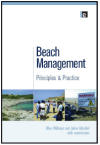 Beach Management
Beach Management
Part One covers beach management principles and theory and addresses practical management tools and guidelines, including how to determine the best management strategy for different beach types
(linear, pocket, resort, urban, village, rural and remote) as well as how to include user preferences and priorities in effective management plans.
Part Two provides a wealth of case studies of best and worst practice, authored by a cast of international beach management experts from the UK, USA, New Zealand, the Mediterranean and Latin America. The emphasis throughout the book is on optimizing economic, social and environmental outcomes, and reconciling competing needs in management planning for beach areas. This book is an indispensable tool kit for all professionals in beach and coastal/beach zone management, including local and regional authorities, planners, park and protected area managers, societies, resort beach owners and managers. It is also a comprehensive primer for university under and post-graudate students of land, coastal zone and beach management, coastal geography as well as tourism and conservation planning and management.
Allan Williams is a Professorial Research Fellow at the Swansea Metropolitan University, Wales, UK and has published more than 250 academic papers on coastal science and geography and has extensive experience in working on coastal problems in Europe, the Far East, the USA, Africa and New Zealand.
Anton Micallef is a full-time senior lecturer at the International Environment Institute of the University of Malta and has consulted and published on many aspects of the coastal environment. He is also Director of the Euro-Mediterranean Centre on Insular Coastal Dynamics, a specialised Centre of the Council of Europe’s Open Partial Agreement on Major Natural and Technological Hazards.
Ecology of Marine Sediments
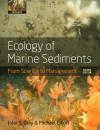 Ecology Of Marine Sediments - From Science to Management
Ecology Of Marine Sediments - From Science to Management
From Science to Management
John S. Gray & Michael Elliott
Marine sediments provide the largest habitat on planet earth, yet knowledge of the structure and function of their flora and fauna continues to be poorly described in current textbooks. This concise, readable introduction to benthic ecology builds upon the strengths of the previous edition but has been thoroughly revised throughout to incorporate the new technologies and methods that have allowed a rapid and ongoing development of the field. It explores the relationship between community structure and function, and the selection of global examples ensures an international appeal and relevance. The economic value of marine sediments increases daily, reflected in the text with a new emphasis on pollution, fisheries and management. This accessible textbook is suitable for both advanced undergraduate and graduate students who have had a general ecology course, but no further training in benthic ecology. It will also be of relevance and use to professional researchers and consultants in marine ecology and environmental science who seek a compact but comprehensive introduction to benthic ecology.
Global Loss of Coastal Habitats
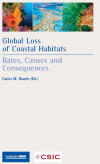 Global Loss Of Coastal Habitats
Global Loss Of Coastal Habitats
Coastal habitats, including coral reefs, seagrass meadows, and macroalgal beds, salt marshes and mangrove forests, are key ecosystems in terms of their role in supporting marine biodiversity and the functions they deliver to society, which include shoreline protection, carbon burial and their role as a nursery for living resources. Because of these and other important services such as nutrient cycling—also a result of their high production and metabolic rates—coastal habitats have been acknowledged to rank amongst the most valuable ecosystems on Earth. Yet these habitats are being lost globally at alarming rates, exceeding by between four and ten times the global loss of rainforests. This volume sets out to increase awareness about the damage being done to coastal ecosystems by providing detailed analyses, global in scope, of the rates of loss, and their causes and consequences, for individual types of habitats.
This book draws its contents from the third in a series of debates organized jointly by the Spanish National Research Council (CSIC) and the BBVA Foundation around the work of the Cap Salines Coastal Research Station (Mallorca, Balearic Islands). In its pages, leading international experts review and synthesize the current state and coastal habitats and the causes of consequences of current losses.
Ecological Economics of the Oceans and Coasts
 Ecological Economics
Ecological Economics
Ecological Economics of the Oceans and Coasts
Published by Edward Elgar, 2008
Cost £55 Pages 380
Editors: Professor Murray Patterson and Dr Bruce Glavovic,
NZ Centre for Ecological Economics, Massey University
This book offers a fresh view on how oceans and coasts are, and should be, managed. The urgency of this issue is increasingly being recognized, as critical limits to the economic exploitation of our oceans and coasts are reached. The authors argue that Ecological Economics is in a unique position to address this problem, given its particular focus on interconnected ecological and economic systems.
Four ‘cornerstones’ of this ecological economics approach to the oceans and coasts are presented. Most importantly, sustainability is the overarching policy goal, rather than economic efficiency as is emphasized in mainstream economics. Secondly, recognizing the biophysical limits and thresholds of marine systems is fundamental. Thirdly, a complex systems view is adopted, which has profound implications for managing marine systems in the face of intrinsic uncertainty, irreversibility and interdependent behaviour. Finally, the approach is necessarily methodologically pluralistic, given the complexity and multi-faceted character of marine ecological-economic systems.
Contributing Authors: Murray Patterson, Bruce Glavovic Chris Batstone, Anthony Cole, Mark Gibbs, Derrylea Hardy, Garry McDonald, Shuang Liu, Ben McNeil, Keith Probert, Matthias Ruth, Basil Sharp, Nicola Smith, Charlotte Šunde and Matthew Wilson
New Policy Brief: UNESCO / SCOPE / UNEP - "Coastal Basins on the edge.”
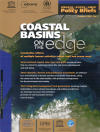 Packmeds Policy Brief
Packmeds Policy Brief
“Coastal Basins on the Edge: This policy brief, based on the report Watersheds, Bays and Bounded Seas, provides a summary for policymakers, students, and non-scientists of the importance of semi-enclosed marine systems, the consequences of human impacts on these systems, and recommendations about how to manage human impacts. Copies are available from SCOPE, UNESCO, UNEP, and SCOR
Carbon and Nutrient Fluxes in Continental Margins
 Carbon And Nutrient Fluxes
Carbon And Nutrient Fluxes
A Global Synthesis
Series: Global Change - The IGBP Series
Liu, K.-K.; Atkinson, L.; Quiñones, R.; Talaue-McManus, L. (Eds.)
2009, XII, 500 p. 278 illus., 90 in color., Hardcover
ISBN: 978-3-540-92734-1
Due: March 3, 2009
129,95 €
Cart
About this book
The book provides best estimates of carbon and nutrient fluxes in seven types of continental margins. In each type, these fluxes are reported in detail individually for 3-7 representative geographic regions, each of which is characterized by concise descriptions of the physical and biogeochemical settings. Drawn from the regional synthesis, a global synthesis is put together for carbon fluxes exchanged between continental margins as a whole and the atmosphere and between that and the open ocean. Global syntheses on sediments and nutrients discharged to the ocean from land are also provided in the book. To guide future research on continental margin biogeochemistry, the book also elaborates on a few critical themes that emerged in recent years. One of these is the human impact on the continental margin biogeochemistry, which accentuates the need to include human perturbation of the system in future research. Thus the book represents the state-of-the-art knowledge on the subject, which will be needed for all researchers on continental margin environmental issues.
Enhanced ocean carbon storage from anaerobic alkalinity generation in coastal sediments
1Dalhousie University, Dep. of Oceanography, Halifax, Canada
2Royal Netherlands Institute for Sea Research, Den Burg, Texel, The Netherlands
3University of Liège, Chemical Oceanography Unit, Liège, Belgium
4Leibniz-Institut für Meereswissenschaften, IFM-GEOMAR, Kiel, Germany
5Station Biologique de Roscoff, UMR 7144 CNRS et UPMC Univ. Paris 6, Equipe Chimie Marine, Roscoff, France
Abstract. The coastal ocean is a crucial link between land, the open ocean and the atmosphere. The shallowness of the water column permits close interactions between the sedimentary, aquatic and atmospheric compartments, which otherwise are decoupled at long time scales (≅ 1000 yr) in the open oceans. Despite the prominent role of the coastal oceans in absorbing atmospheric CO2 and transferring it into the deep oceans via the continental shelf pump, the underlying mechanisms remain only partly understood. Evaluating observations from the North Sea, a NW European shelf sea, we provide evidence that anaerobic degradation of organic matter, fuelled from land and ocean, generates total alkalinity (AT) and increases the CO2 buffer capacity of seawater. At both the basin wide and annual scales anaerobic AT generation in the North Sea's tidal mud flat area irreversibly facilitates 7–10%, or taking into consideration benthic denitrification in the North Sea, 20–25% of the North Sea's overall CO2 uptake. At the global scale, anaerobic AT generation could be accountable for as much as 60% of the uptake of CO2 in shelf and marginal seas, making this process, the anaerobic pump, a key player in the biological carbon pump. Under future high CO2 conditions oceanic CO2 storage via the anaerobic pump may even gain further relevance because of stimulated ocean productivity.
Final Revised Paper (PDF, 630 KB)
COASTAL WETLANDS
 Coastal Wetlands
Coastal Wetlands
An Integrated Ecosystem Approach
Edited By
Gerardo Perillo, Instituto Argentino de Oceanografia, Bahia Blanca, Argentina
Eric Wolanski, James Cook University, Queensland, Australia
Donald Cahoon, Patuxent Wildlife Research Center, US Geological Survey, Beltsville, MD, USA
Mark Brinson, East Carolina University, Greenville, NC, USA
Description
Coastal wetlands are under a great deal of pressure from the dual forces of rising sea level and the intervention of human populations both along the estuary and in the river catchment. Direct impacts include the destruction or degradation of wetlands from land reclamation and infrastructures. Indirect impacts derive from the discharge of pollutants, changes in river flows and sediment supplies, land clearing, and dam operations. As sea level rises, coastal wetlands in most areas of the world migrate landward to occupy former uplands. The competition of these lands from human development is intensifying, making the landward migration impossible in many cases. This book provides an understanding of the functioning of coastal ecosystems and the ecological services that they provide, and suggestions for their management. In this book a CD is included containing color figures of wetlands and estuaries in different parts of the world.
Audience
students, engineers, scientists, researchers on coastal environments, and resource managers with special interest in coastal wetland ecosystems.
Watersheds, Bays, and Bounded Seas: The Science and Management of Semi-Enclosed Marine Systems
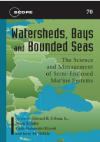 Cover
Cover
This book resulted from a workshop in 2007 jointly sponsored by the Scientific Committee on Problems of the Environment (SCOPE), the International Association for the Physical Sciences of the Ocean (IAPSO), and SCOR. Many individuals from SCOR projects and working groups were involved in the workshop and as authors.
Island Press also makes it possible for anyone who wishes to use the book for a class to examine it for 90 days for free (see http://www.islandpress.org/educators).
Global Environment Outlook GEO-4: environment for development
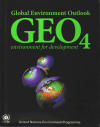 Geo
Geo
This recent assessment report provides an overview of global social and economic trends and the state-and-trends of the global and regional environments over the past two decades, as well as the human dimensions of these changes. It highlights the interlinkages and challenges of environmental change, and opportunities that the environment provides for human well-being. It provides an outlook for the future, and policy options to address present and emerging environmental issues.
GEO-4 places sustainable development at the core of the assessment, particularly on issues dealing with intra- and intergenerational equity. The assessment uses the drivers-pressures-state-impacts-responses (DPSIR) framework for analysis of the Atmosphere, Land and Water environments and Biodiversity. The analysis includes the need and usefulness of valuation of environmental goods and services, and the role of such services both in enhancing development and human well-being and in minimizing human vulnerability to environmental change.
Chapter 4 of the report reviews the pressures on water in the context of global and regional drivers. It covers the state-and-trends of the water environment, including its ecosystems and their fish stocks, emphasizing the last 20 years, and the impacts of changes on the environment and human well-being at local to global scales. It describes how the water cycle is being affected by long-term climate change, affecting precipitation patterns and the cryosphere, ocean salinity and acidification, and sea level. The chapter reviews water use and degradation at basin scales and the consequences for human well-being, emphasizing the catchment-to-coast continuum and impacts on the provision of aquatic ecosystem services. The review of fish stocks highlights the large-scale decline in freshwater and marine fisheries, caused mostly by persistent overfishing.
The Water chapter notes the continuing challenge for the management of water resources and aquatic ecosystems to balance environmental and developmental needs, requiring a sustained combination of technology, legal and institutional frameworks, and, where feasible, market-based approaches.
Download report - United Nations Environment Programme (2007)
Integrated Coastal Zone Management (ICZM)
 Integrated Coastal Zone Management (ICZM)
Integrated Coastal Zone Management (ICZM)
This book presents diverse case studies from around the World, including many Asian countries, Africa, North and South America, Europe, the Middle East, Island Nations, and elsewhere. The book's 39 chapters are organized according to seven interrelated themes including global to local scales of ICZM, human dimensions and social, physical and biological aspects, and key closely linked topics ranging from biodiversity conservation to hazards and risk management, the impact of climate change, and the application of remote sensing and geospatial technologies. The outcome of this compilation is to synthesize recent case study experiences, highlighting the changing global scenario of ICZM, the high demand for coastal resources, current lack of governance, and the need to import and export both techniques and expertise, including the importance of protecting more vulnerable coastal sites from natural calamities. Ultimately, this book provides a means to help address and solve the complexity that exists between coastal systems and anthropogenic activities.
Topics Covered
• ICZM – Global to Local Scales
• Human Dimensions in ICZM
• Coastal Erosion, Protection, and Development
• Special Areas and Species in the Coastal Zone
• Natural Hazards and Disasters in the Coastal Zone
• Climate Change Impacts and ICZM
• Tools for Data Gathering and Analysis in ICZM
BACC - A Regional Climate Change Assessment for the Baltic Sea Basin
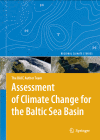 Bacc Frontcover
Bacc Frontcover
A regional climate change assessment report for the Baltic Sea basin was published in January this year (BACC Author Team, 2008). The assessment is an example for a type of urgently needed reports helping to put global climate change (as portrayed e.g. by the IPCC reports) into a regional perspective, which local stakeholders and politicians can relate to. The so called BACC (BALTEX Assessment of Climate Change for the Baltic Sea Basin) report was compiled by a consortium of 84 scientists from 13 countries around the Baltic Sea and covers various disciplines related to climate research and ecological impacts. The book is divided in chapters on past and current climate change, on projected future anthropogenic climate change, and on observed and projected impacts on terrestrial and marine ecosystems of the Baltic Sea basin. It aims to bring together consolidated (published) knowledge which has broad consensus in the scientific community. Still, this consensus may at times take the form of “consensus on dissensus”, as for certain points, contrary opinions cannot be resolved due to insufficient scientific evidence.
Major findings of the assessment include an observed average air temperature increase over the Baltic Sea basin of 0.85°C since 1871, which is slightly higher than reported by the IPCC (2007) for the entire globe. This has already lead to a decreased ice and snow cover and ice season over the Baltic Sea basin, a shift towards earlier spring vegetation phases and an extended growth season, and changed species distributions and migration patterns. Regional climate models until the year 2100 project rising air temperatures of 3-6 °C over the entire basin, resulting in a possible reduction of sea ice in the Baltic Sea by up to 80%. Winter precipitation over the entire basin is projected to increase, while summers could be dramatically drier in the southern part of the basin. As to sea level changes and their impacts on coastal regions, the Baltic Sea is specific because the overlay of the projected global sea level rise and the regional post-glacial land uplift is expected to create regionally varying patterns of local sea level rise, leading to different requirements for potential coastal protection measures later in this century.
BACC is an ongoing project within the BALTEX programme (www.baltex-research.eu), the latter being a regional hydroclimate project of the Global Energy and Water Experiment (GEWEX) of WCRP. Similar initiatives to BACC, including, for example, a climate report for the greater Hamburg area in Germany, for China’s Yellow Sea, or for the Laptev Sea north of Russia, have already been launched. A second BACC climate report is due in 2012. For more information on BACC, see www.baltex-research.eu/BACC.
References
BACC Author Team (2008). Assessment of Climate Change for the Baltic Sea Basin, Regional Climate Studies, Springer Heidelberg, 474 pp.
Coastal development: The Oder estuary and beyond
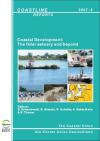 Frontcover Coastal Development
Frontcover Coastal Development
Coastal development: The Oder estuary and beyond
This report reflects the content of the second German-Polish Coastal Dialogue conference, 21-22 March 2007 in Międzyzdroje, Poland, carried out within the research project ICZM-Oder. In the report, you will find results not only from the ICZM-Oder project but also other ICZM-related projects with a geographical focus on the Baltic and North Seas. With respect to the focus themes, the report is subdivided into the chapters “The Oder estuary: results and perspectives”, “preconditions and tools for coastal management” and “North and Baltic Sea experiences”.
For ordering Coastline Reports 8 (25 Euro including postage, 15 Euro for members of EUCC Germany) please send an E-Mail with your addresses for delivery and invoice to:
eucc(at)eucc-d.de
Effects of Nutrient Enrichment In the Nation’s Estuaries
 Eutro Cover
Eutro Cover
Effects of Nutrient Enrichment In the Nation’s Estuaries
This recent publication provides a comprehensive assessment update of national US estuarine eutrophication and concludes in a set of management related recommendations which are:
• Reducing eutrophic conditions in estuaries requires coordinated and integrated action that balances management action, efficient monitoring to assess the effectiveness of the management, targeted research, and a communication campaign aimed at engaging the broader community. Major recommendations are:
- Implement more aggressive management actions to reduce nutrients for improvements in eutrophic condition.
- Capitalize on monitoring technological innovations (e.g., observing systems, remote sensing, web resources) to improve comprehensive assessment of eutrophication status in a coordinated and timely fashion.
- Focus research on improving assessment capability, resolving uncertainty, and establishing criteria/thresholds.
- Engage resource managers, researchers, policy makers, and the community with frequent assessment updates at local, regional, and national levels.
- Develop tools to quantitatively relate the effectiveness of mitigation strategies in response to policy actions.
The book reflects various aspects of LOICZ related activities such as typology considerations in Chapter 6 and of course the biogeochemical budgeting and its further development (see Priority Topic 2). Various LOICZ colleagues contributed.
Download: Effects of Nutrient Enrichment In the Nation’s Estuaries

